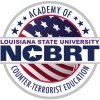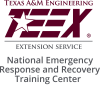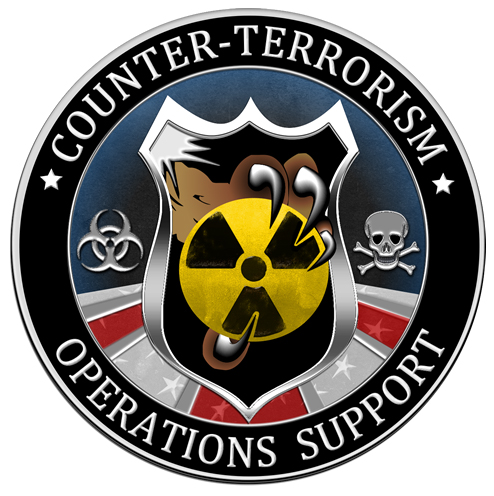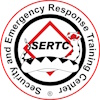Center for Domestic Preparedness (CDP)

The Center for Domestic Preparedness (CDP) is a vital training component of the Department of Homeland Security, Federal Emergency Management Agency, National Training and Education Division. The CDP develops and delivers training for emergency response providers from state, local, and tribal governments and, when appropriate, the federal government, foreign governments, and private sector entities. The CDP offers over 50 training courses at its resident campus in Anniston, Alabama. Training at the CDP campus is federally funded at no cost to state, local, and tribal emergency response professionals from the following disciplines: Emergency Management, Emergency Medical Services, Fire Service, Governmental Administrative, Hazardous Materials, Healthcare, Law Enforcement, Public Health, Public Safety Communications, and Public Works. In addition to resident training, the CDP has a robust mobile training capability that can provide critical advanced hands-on training in local jurisdictions across the country.
The CDP’s Chemical, Ordnance, Biological, and Radiological Training Facility (COBRATF) is the nation’s only federally chartered toxic agent training facility for state, local, and tribal emergency responders. This unique facility serves as the platform for tactical operations training in a contaminated environment that includes nerve agents (GB-Sarin/VX), simulated biological hazards (Ricin/Anthrax), and radiological sources. The CDP’s Noble Training Facility (NTF) is a hospital venue that serves as a platform for multiple healthcare, emergency medical service, public health, and environmental health courses. NTF provides participants with a realistic training environment designed to prepare and challenge professionals for mass casualty incidents as a result of a catastrophic natural disaster or terrorist act.
The Energetic Materials Research and Testing Center (EMRTC)

The Energetic Materials Research and Testing Center (EMRTC) at New Mexico Tech (NMT) is the consortium’s lead partner for explosives, live explosives, and incendiary devices training.
Founded in 1889 as the New Mexico School of Mines, NMT has evolved into a research-oriented public university specializing in science and engineering. The institution has earned a worldwide reputation for the quality of its research and academic programs. As a result, NMT has consistently garnered high ratings from several sources, such as US News and World Report and the Princeton Review. NMT conducts applied research in explosive technology, explosive materials engineering, information security, and modeling and simulation for numerous U.S. Government agencies, including the Departments of Defense, Justice, State, Transportation, and Energy. The campus of NMT is located 70 miles south of Albuquerque, NM. EMRTC’s additional training site, Playas Training and Research Center, is located in the southwestern corner of New Mexico.
As a major department of New Mexico Tech, EMRTC traces its roots back to the development of the variable timing fuse — commonly known as the proximity fuse — during World War II. In the past 60 years, the department has grown to a highly regarded research, development, test, and evaluation complex. Currently, EMRTC is a close knit team of more than 100 highly experienced professionals who on a yearly basis perform 200-300 in-depth scientific investigations and studies involving energetic materials. EMRTC offers the consortium a unique blend of facilities, expertise, training development, and research opportunities.
National Center for Biomedical Research and Training (NCBRT)

The National Center for Biomedical Research and Training/Academy of Counter-Terrorist Education (NCBRT/ACE) at Louisiana State University is a founding member of the NDPC. NCBRT/ACE has been involved in the development and delivery of training and related efforts in support of the Office for State and Local Domestic Preparedness Support since 1998, and now for the Office for Grants and Training (G&T). Since that time, NCBRT/ACE has developed many courses and delivered them for the U.S. Departments of Homeland Security, Justice, Health and Human Services, and Agriculture, as well as for State and local jurisdictions, non-governmental organizations, and the private sector. Courses deal with Weapons of Mass Destruction, counter-terrorism, and high consequence events for all disciplines involving emergency management, law enforcement (including tactical operations), HazMat teams, public health, EMS, hospital, agricultural, and others.
NCBRT/ACE has also developed and delivered numerous workshops and seminars, developed scenarios and exercises, and has provided technical assistance to governmental and non-governmental entities. Not only are the capabilities of NCBRT/ACE wide and deep, but they can be readily augmented by the scientists, researchers, and educators available from LSU, the flagship university of Louisiana.
Texas A&M Engineering Extension Service (TEEX) National Emergency Response and Recovery Training Center (NERRTC)

The National Emergency Response and Recovery Training Center (NERRTC) was established in 1998 as part of the NDPC and approved in 2000 by the Federal Emergency Management Agency (FEMA) as a national disaster response center. The NERRTC’s mission is to design, develop, and deliver training, exercises, and technical assistance for the nation’s emergency responders. NERRTC combines traditional classroom work, small group instruction, field exercises, participant activities, case studies and vignettes, multimedia scenarios, and computer-aided training and exercise simulations to train individuals and jurisdictions.
NERRTC assists and plays a major role in DHS/FEMA’s establishing and maintaining the concept of “culture of preparedness” and has sharpened its focus on that concept by incorporating an “all-of-nation”/”whole community,” risk-driven, capabilities-based approach to preparedness. NERRTC provides training in ten core competency areas across the community: cybersecurity, crisis communications, executive and elected officials’ education, hazardous materials awareness and operations, health and medical services, incident management, infrastructure protection, search and rescue, threat and risk assessment, and training gap analyses.
NERRTC is a center of excellence within the Texas A&M Engineering Extension Service (TEEX), one of the largest providers of workforce training in the nation since 1919. TEEX is known for its innovative, customized programs, including hands-on and on-site training. TEEX is a state agency of the Texas A&M System. It is headquartered in College Station, TX with seven regional training centers and offices located around the state of Texas. These facilities support nine agency components, all of which offer workforce training in particular subject areas, and collaborate to provide TEEX customers with a seamless training venue. TEEX courses are taught locally throughout the state, at customer facilities, and at TEEX-approved locations both nationally and internationally.
National Nuclear Security Administration/CTOS-Center for Radiological/Nuclear Training (NNSA/CTOS)

The U.S. Department of Energy’s National Nuclear Security Administration’s (NNSA) Counterterrorism Operations Support (CTOS) Center for Radiological/Nuclear Training program located at the Nevada National Security Site (NNSS) is the nation’s premier weapons of mass destruction (WMD) radiological/nuclear training center. Since 1998, CTOS has focused on training America’s First Responders to prevent, mitigate, or respond to terrorists’ use of radiological or nuclear weapons of mass destruction. Our mission is to develop and deliver the most realistic and highest quality training in support of Homeland Security using our extensive radiological expertise with the unique assets of the NNSS.
CTOS provides online courses as well as hands-on, performance-based training; conducted both at the NNSS and by Mobile Training Teams. This focused training prepares responders to take immediate, decisive action to prevent or respond to terrorist use of radiological/nuclear WMDs such as improvised nuclear devices and radiological dispersal devices. CTOS training facilities on the NNSS offer exclusive learning opportunities with several unique exercise training sites including one at “ground zero” of four previous nuclear detonations as well as an industrial complex previously used for nuclear ram jet research and testing.
CTOS develops and conducts training courses for the Federal Emergency Management Agency, National Preparedness Directorate, and the National Training and Education Division within the U.S. Department of Homeland Security. Its continuing role is to provide expertise and training to the state and local emergency response community.
CTOS curriculum draws from the expertise of scientists, researchers, and subject matter experts from the NNSA’s Remote Sensing Laboratories and DOE’s National Laboratories. With FEMA/NPD concurrence, CTOS coordinates the development and delivery of preventive radiological/nuclear detection and interdiction training with the Domestic Nuclear Detection Office, the DHS entity charged with this responsibility.
National Disaster Preparedness Training Center (NDPTC)

The National Disaster Preparedness Training Center (NDPTC) is the only member of the NDPC to focus primarily on natural hazards. Uniquely positioned geographically and culturally, the NDPTC at the University of Hawaii works collaboratively to develop and deliver training and education in the areas of disaster preparedness, response, and recovery to governmental, private, tribal, and non-profit entities. Combining urban planning and environmental management, the NDPTC addresses the needs of vulnerable at-risk populations, particularly the challenges faced by coastal and island communities.
The NDPTC is focused on building community resiliency: the capacity to absorb shock, to recover quickly, and to learn from catastrophic events so that our communities are better prepared and strengthened against damage from future events. This involves all sectors in the community, from front-line responders and emergency managers to those involved in applied scientific research related to the identification of hazards and risks and the design and engineering of mitigation and adaptation strategies through both in-service, functional training venues as well as for those pursuing formal academic credentials in disaster management.
Transportation Technology Center, Inc. DBA MxV Rail (MxV Rail)/Security and Emergency Response Training Center (SERTC)

Transportation Technology Center, Inc. DBA MxV Rail (MxV Rail)
Security and Emergency Response Training Center (SERTC)
The Transportation Technology Center, Inc. (TTCI), a subsidiary of the Association of American Railroads, is an active member of the NDPC. Within MxV Rail is a training division called the Security and Emergency Response Training Center (SERTC). Established in 1985, SERTC specializes in providing state-of-the-art response training dealing with Surface Transportation involving Hazardous Materials, Weapons of Mass Destruction and emergency event planning for Surface Transportation, to enhance local response capabilities and preparedness. Since inception, SERTC has trained more than 50 thousand students worldwide.
SERTC’s training is 50-85 percent hands-on: students work on actual transportation equipment encountered in the field. SERTC has the largest collection in the United States of full-sized rail cars which are used as training aids including other realistic props and scenarios. This commitment to realism is what sets SERTC apart as the premier training site for rail, highway, intermodal, planning, and incident management in the world. In addition to serving the transportation service industry, SERTC also provides training for public sector emergency response communities, HazMat teams, emergency management and law enforcement, EMS, the chemical industry, government agencies, tribal agencies and emergency response contractors from all over the world. SERTC draws on talents and experiences of seasoned staff members as well as their interaction with other professionals in the HazMat and emergency response sectors both domestic and internationally.




